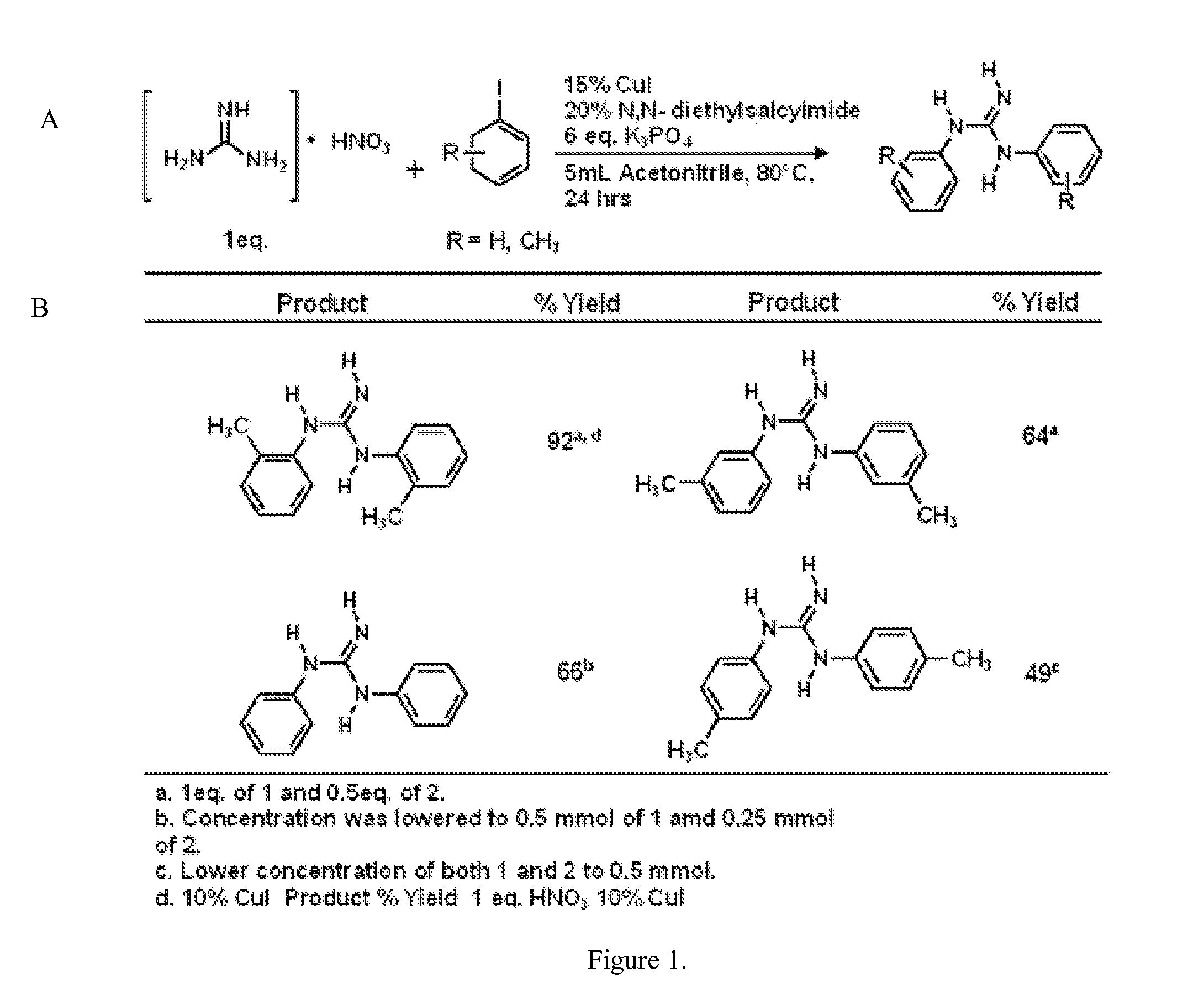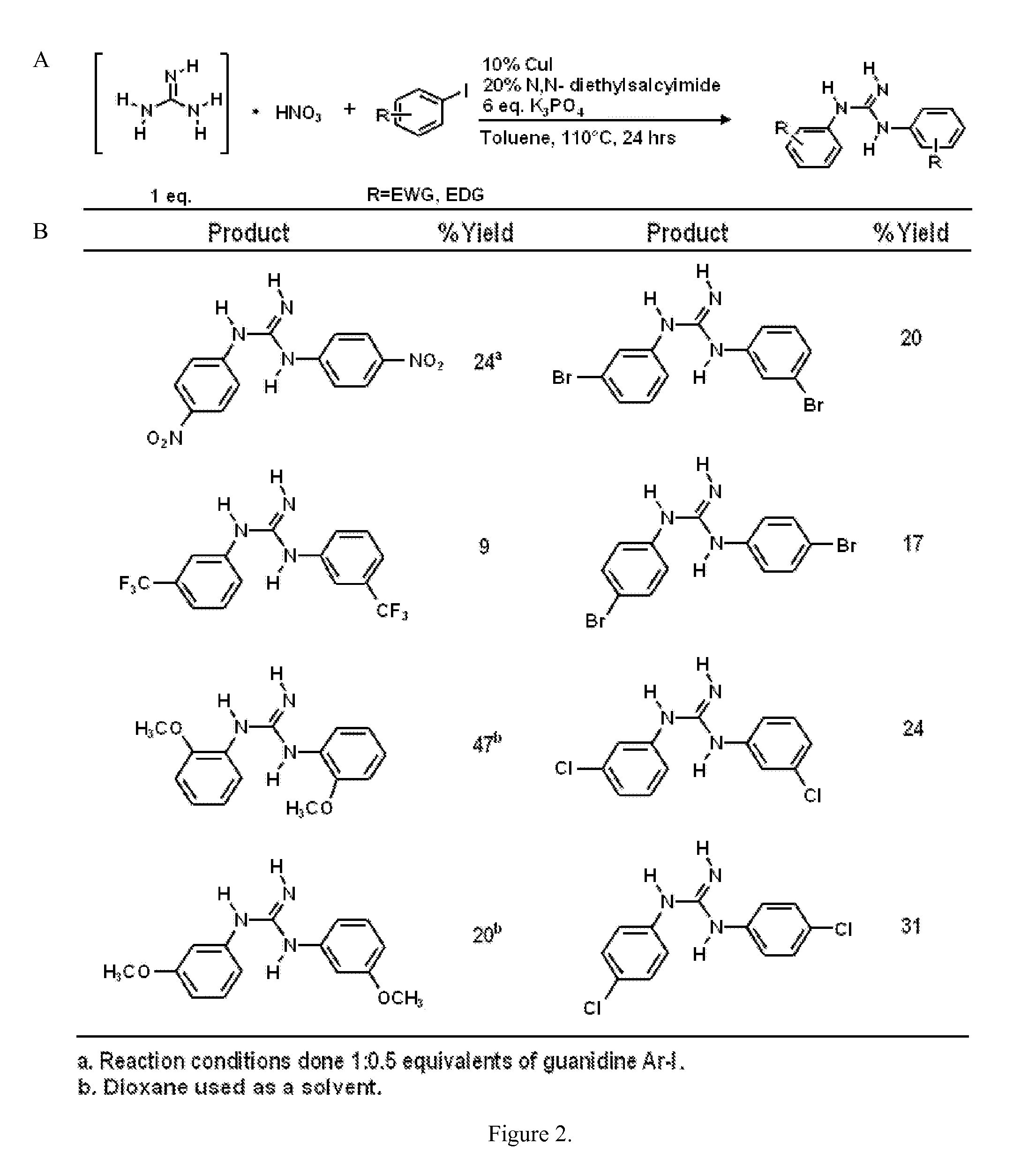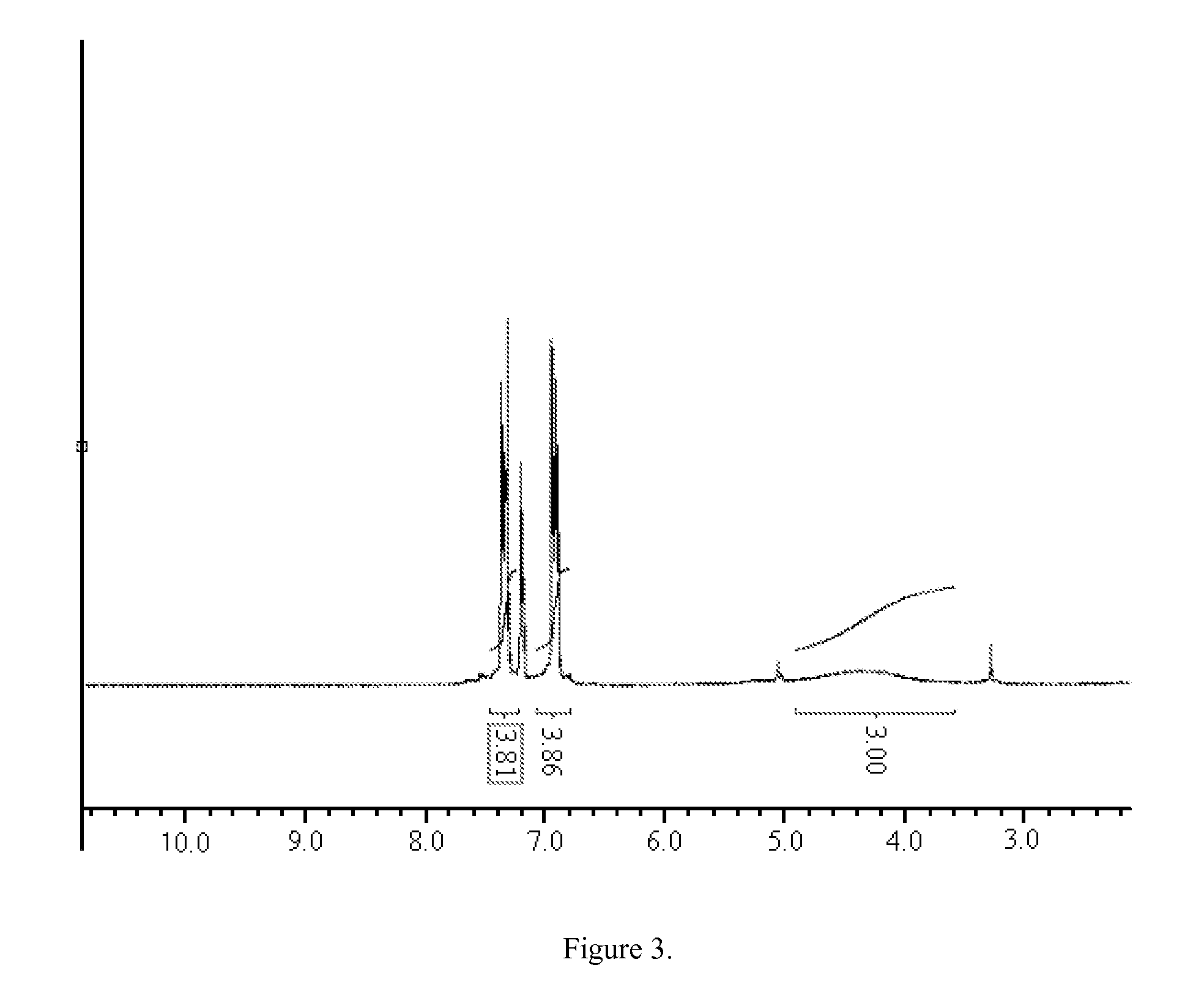N,n'-di-p-bromophenyl guanidine treatment for stroke at delayed timepoints
a technology of dibromophenyl guanidine and n-dibromophenyl guanidine, which is applied in the field of immune responses, can solve the problems of unsatisfactory toxic and expensive reagents of existing methods, and achieve the effects of improving dosing, reducing adverse effects, and superior anti-ischemic properties
- Summary
- Abstract
- Description
- Claims
- Application Information
AI Technical Summary
Benefits of technology
Problems solved by technology
Method used
Image
Examples
example 1
The copper-catalyzed addition of 1-bromo-4-iodobenzene to Guanidine Nitrate
[0039]The reaction was carried out in flame-dried sealed cap test tubes with magnetic stirring. Copper Iodide, 1-bromo-4-Iodobenzene, and potassium phosphate were purchased from Sigma Aldrich and used as is. N,N-diethylsalycilamide was purchase form Sigma Aldrich and used after standard purification by crystallization or prepared by a known literature procedure (Motoyama, et al. Self-encapsulation of homogeneous catalyst species into polymer gel leading to a facile and efficient separation system of amine products in the Ru-catalyzed reduction of carboxamides with polymethylhydrosiloxane (PMHS). J Am Chem. Soc. 2005 Sep. 28; 127(38):13150-9). Thin layer chromatography was performed on Merck TLC plates (silica gel 60 F254). To a flame-dried reaction tube was added guanidine nitrate (1 mmol, 0.1221 g), 1-bromo-4-iodobenzene (1 mmol, 0.2840 g), CuI (0.1 mmol, 0.190 g), K3PO4 (1.2778 g, 6 eq.), N,N-diethylsalycil...
example 2
In Vivo Evaluation of DTG Analogues
[0046]11 adult male Sprague-Dawley rats (Harlan, Indianapolis, Ind.) weighing 300 to 350 g were housed in a climate controlled room with water and laboratory chow available ad libidum. Sprague-Dawley rats (300-350 g) were randomly assigned to 1 of 3 groups: MCAO (n=4); MCAO and DTG (n=3); or MCAO and p-Br-DPG (n=4). MCAO surgery was performed as previously reported by Vendrame et al. (Vendrame, et al., Infusion of human umbilical cord blood cells in a rat model of stroke dose-dependently rescues behavioral deficits and reduces infarct volume. Stroke. 2004 October; 35(10):2390-5. Epub 2004 Aug. 19) and originally described by Longa et al. (Longa, et al., Reversible middle cerebral artery occlusion without craniectomy in rats. Stroke. 1989 January; 20(1):84-9). Laser Doppler Radar (LDR) was used to monitor decrease in blood perfusion that indicates successful occlusion (Moor Instruments Ltd, Devon, England). A 2 mm diameter hole was drilled into the ...
example 3
The Microglial Migratory Response to Chemoattractant Application is Suppressed by DTG and P-Br-DPG
[0048]Microglial migration was assayed using a Boyden chamber fitted with a polycarbonate membrane containing 8 μm pores. Microglia (500,000 cells) were placed in the upper chamber and control media or 100 μM ATP were added in the absence and presence of DTG, or various indicated concentrations of p-Br-DPG to the bottom chamber. Microglia were allowed to migrate for 4 hrs at 37° C., and were subsequently stained with DAPI and counted. The addition of ATP significantly increased the migration of microglia compared to DMEM, as seen in FIG. 10. The addition of low-concentration p-Br-DPG (20 μM) also significantly increased microglia migration, whereas higher p-Br-DPG concentrations or DTG inhibited the migration. Further, the amount of microglial migration for p-Br-DPG-treated samples was comparable to DTG-treated samples, indicating that p-Br-DPG is effective in reducing neural immune res...
PUM
| Property | Measurement | Unit |
|---|---|---|
| time | aaaaa | aaaaa |
| pH | aaaaa | aaaaa |
| pH | aaaaa | aaaaa |
Abstract
Description
Claims
Application Information
 Login to View More
Login to View More - R&D
- Intellectual Property
- Life Sciences
- Materials
- Tech Scout
- Unparalleled Data Quality
- Higher Quality Content
- 60% Fewer Hallucinations
Browse by: Latest US Patents, China's latest patents, Technical Efficacy Thesaurus, Application Domain, Technology Topic, Popular Technical Reports.
© 2025 PatSnap. All rights reserved.Legal|Privacy policy|Modern Slavery Act Transparency Statement|Sitemap|About US| Contact US: help@patsnap.com



